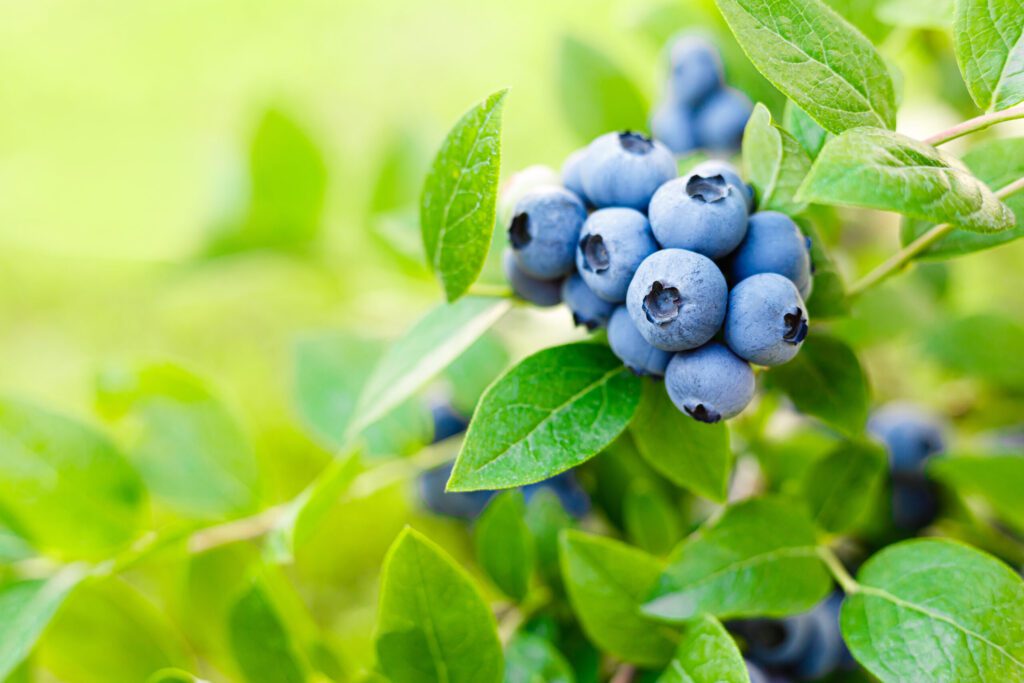2021 Harvest Up 4.9 Million Pounds From Last Year
by PAUL CATALA
Blueberry grower Kyle Hill credits man and machine for helping to overcome the blueberry blues.
In 2020, the Florida Blueberry Growers Association reported a season yield of only 17 million pounds of blueberries on about 5,500 acres, harvested statewide from mid-April through May.
But through technological innovations and upgrades in mechanized harvesters, the waning of the coronavirus pandemic and freezes that hit blueberry competitors such as Texas, Florida blueberry growers took in 21.89 million pounds for 2021, close to the 22.7 million pounds harvested in 2019 and before the pandemic.
Hill — who works for Southern Hill Farm in Clermont – owns a mechanical harvesting company, H&C Harvesting, based in Mount Dora. He says 2021 was better not only because of the loosening of coronavirus restrictions, but also better labor-saving equipment such as back loaders and top loaders.
“As your prices go down with the market dropping, the hand labor stays the same, never goes down. With machines, you’re increasing your market, sometimes by 100 percent – it makes a big difference,” he adds.
Although exact harvest numbers don’t come out until about a year and a half after a season, the economic impact of the Florida blueberry harvest for 2021 is predicted to be up to $200 million, says Brittany Lee, executive director of the Florida Blueberry Growers Association.
Lee says in 2020 and the beginning of the pandemic there was a 70 percent sales loss compared to that same week in the first week of April 2019. She says consumers weren’t shopping in stores and that made a significant impact. But she says 2021 sales have been strong.
Lee – FBGA executive director since 2019 and vice president and manager of the 112-acre Florida Blue Farms in Waldo – says she also sees more use of machine harvesting as one of the best ways to continue building successful farming operations and increasing harvest numbers. She says in the wake of the pandemic, relying less on manual labor has helped blueberry farmers be more productive.
“Five years ago, machine harvesting for Florida blueberries was still in a trial phase for most growers,” says Lee, who lives in Gainesville. “But now, it is a significant part for medium to large growers. Machine harvesting helps harvest costs, which allows us to remain competitive as production pressures from Mexico have been increasing.”
Michael Hill, owner of H&A Farms in Mount Dora – the largest blueberry packer in Florida – says the use of harvesting technology has allowed more Florida blueberries to reach more U.S. markets.
Hill says as more technology is added to the growing and harvesting process, it’s easier to more efficiently and broadly ship product.
“A big problem we are facing is with inflation,” he says. “The cost of everything else around us is going up, including our cost to grow and pack our product, but the sales price is not rising with inflation. Since this is a national inflation issue and not a global one, our competitors can keep shipping product at the same price or lower because their costs haven’t inflated like ours. This will be our challenge going forward.”
As part of the blueberry harvest rebound, Florida blueberries began the season with higher prices than reported in the past two years. According to the U.S. Department of Agriculture, blueberry volumes since the beginning of March were considerably higher than the volumes in 2020 during the same time period or any year since.
The week of May 4, the USDA Market News via Agronometrics reported that after a streak of high prices in the U.S. market, the price of blueberries dropped sharply the following week. The USDA reported a delayed season in Florida and Georgia because weather conditions left a window between the “production of the southern hemisphere and the entry of the northern hemisphere.”
The prices of blueberries in the North American market remained high, hitting their highest point in weeks 15 and 16 of 2021, when average prices per kilogram reached $11.70 per kilogram, a 73 percent increase year-on-year.
At Island Grove Wine Company in Kissimmee, General Manager Sarah Aschliman found blueberry prices were consistent while fruit quality and length of the harvest were optimal. The company’s blueberry Moscato wine – produced year-round — is one of its most popular.
Aschliman, who’s been with Island Grove for about 10 years, says the company uses about 200,000 pounds of blueberries per year for wine production.
“We got a good amount of fruit from our fields for wine as well as fresh production,” she says.
And as Georgia entered the market and Florida reached its peak in week 16, prices fell sharply though they are still higher year-on-year, the USDA reported. Lee says that shows the Florida market was and still is stable.
“Overall, we had a good year, which we needed after a year like 2020,” says Lee.
And that’s the sentiment of Kyle Straughn, who runs the largest blueberry farm in Florida, the 750-acre Straughn Farms in Waldo. Now in his 16th year as a blueberry farmer, he calls the 2021 season a success and is looking forward to continued growth for 2022.
Straughn also says blueberry growers will need to continue to become more mechanized as they continue to develop better varieties of blueberries.
“We’re forced into developing more varieties and methods of machine harvesting for more of our crop to be competitive with cheaper foreign prices,” he says. “We had a stable (2021) market. From a psychological standpoint, we didn’t feel like it was the end of the world; people could start going back to the grocery store and buying their fruit.”

